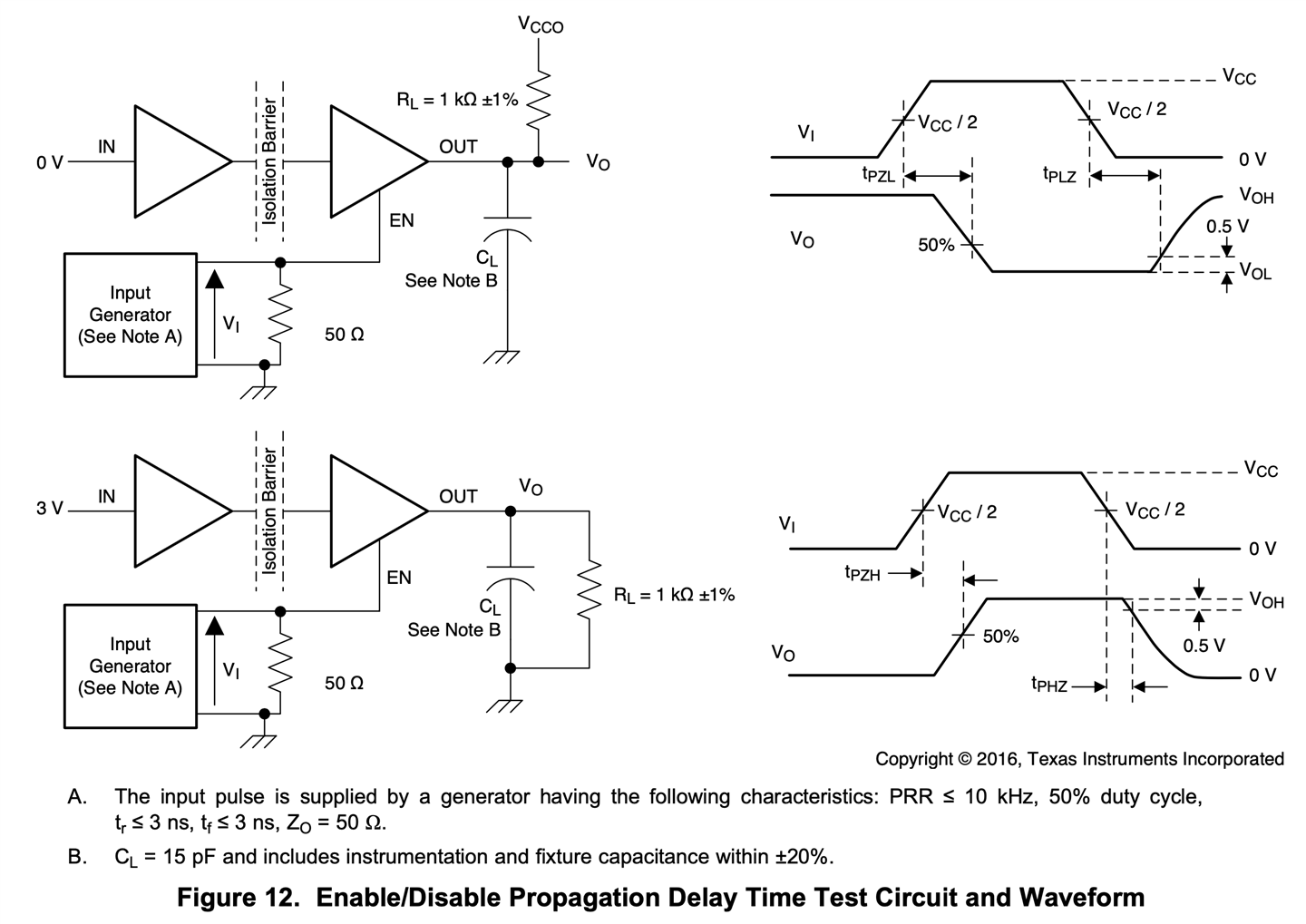Other Parts Discussed in Thread: ISO7821, ISO7841
Hi team,
Could you help?
Thanks & Regards,
Vivian
This thread has been locked.
If you have a related question, please click the "Ask a related question" button in the top right corner. The newly created question will be automatically linked to this question.
Hi team,
Could you help?
Thanks & Regards,
Vivian
Hi Vivian,
Thank you for reaching out.
To make sure I understand the problem statement correctly, please allow me to rephrase the problem. When you enable OUTB by making EN1 HIGH, the output first goes LOW for about 1.7µs irrespective of the status of INB and then starts following the INB. Please correct me if my understanding is incorrect.
This is expected behavior and the 1.7µs time that you have referred to is the enable time. During this time, the output is going to be in default state which for ISOW7821F is LOW. The default of device is to be chosen such that the state doesn't cause any issues in the application and is also the desired idle state of the application. If LOW output triggers an event in your application, then maybe a HIGH default output device ISOW7821 (without 'F') is suitable for the application. ISOW7821 will make the output stay HIGH during the 1.7µs output enable time.
The enable times are not explicitly stated in ISOW7821 datasheet but are listed in digital isolator datasheets as tPZH and tPZL. Let me know if you have any further questions, thanks.
Regards,
Koteshwar Rao
Hi Rao,
Thanks for your answer. Yes, your understanding is correct and reflects the issue.
Could you show me one data sheet related to the ISOW7821 which shows the tpzh and tpzl. Non of the revisions I know have them or mention anything implicit about this behaviour! The ISO7821 data sheet indeed mentions these two times but doesn't state clearly that happens between high-z and working condition!
Thanks & Regards,
Vivian
Hi Vivian,
Thank you for your inputs.
Like I mentioned earlier, this spec is not listed in the ISOW78xx datasheet. But since the data channels in ISOW78xx are similar to the ones in ISO78xx and ISO77xx, most of the specs listed in reinforced digital isolators also apply to data channels in ISOW78xx although they might slightly differ in actual values.
I am listing below the parameters from switching characteristics table of ISO7841 datasheet.

The table refers to Figure 12 for more details on test setup and test conditions.

As shown in the above Figure 12, the test input pulse is applied to EN pin and OUT is monitor. The first waveform shows that tPZL is the time taken by OUT to go LOW after EN goes HIGH. Similarly, the second waveform shows that tPZH is the time taken by OUT to go HIGH after EN goes HIGH.
Hope this is clear from Figure 12. Please suggest customer to use ISOW7821 (non-F) to resolve the issue. Let me know if you have any further questions, thanks.
Regards,
Koteshwar Rao